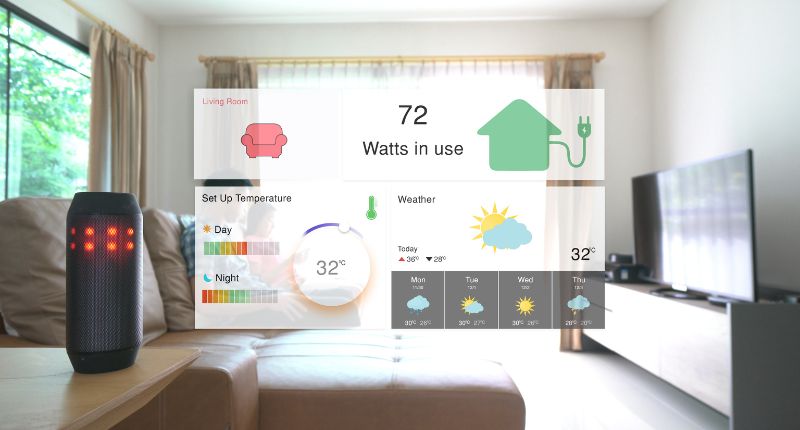- Smart technology has been adopted at a rapid pace overseas.
- Until around 2022, buyers had to allocate about 3% above their base budget price for smart home extras.
- Despite the cost, it is often the least expensive way to attract a higher-paying buyer.
In her fifth article for The Property Tribune, Fiona Yang, executive partner at Plus Agency, discusses smart homes and how despite the additional outlay, it can be one of the least expensive ways to attract a higher-paying home buyer.
Last year, I wrote to you about how developers should future-proof their projects or risk their units becoming obsolete from the moment they are built. New dwellings need built-in smart home features that are much easier and less expensive to install in the construction phase – from electric vehicle chargers to digital entry, advanced security cameras, and smart curtains and mirrors.
It was only 15 months ago, but back then the smart home features that I recommended were still rare in Australia. You might have found them in individual homes and in the rare luxury project, but they were far from the norm.

Today, I’m heartened to see that what was once a rarity is much more common in new home construction. That is a significant shift in development standards in a very short time.
Home buyers are willing to pay more for smarter homes
A study suggests that more than three-quarters of homebuyers are willing to pay more for a smart home. Global sales of smart home technology are expected to climb 68% to AU$357 billion per year by 2027.
In my experience, Australia also has strong smart home demand, especially in the new home market. In our two years of existence, Plus Agency has sold more than $500 million of homes.
Until around 2022, buyers had to allocate about 3% above their base budget price for smart home extras. Today, developers are improving the specs of their new projects to include luxury smart home features to attract buyers. Despite the cost, this is often the least expensive way to attract a higher-paying buyer.
The potential of smart homes: What they look like overseas
First, let’s recap. Buyer preferences are rapidly evolving, but most developers are still building apartments to the minimum standards set decades ago. Australia is far behind our Asian neighbours. New luxury projects in Singapore, Kuala Lumpur, Hong Kong, Shanghai, and other Asian cities already offer features that seem futuristic to some in the Lucky Country.
In China, the high-end smart home systems are called “Five Constant Systems.” They maintain stable and comfortable indoor conditions. A friend of mine in Shanghai spent ~A$110,000 on their Five Constant System. As a result, their home is always at constant temperature and humidity levels, and full of abundant fresh and newly cycled air. Air is filtered through multiple layers, and the whole system operates silently, with noise levels close to 0 decibels.
In Singapore, most luxury homeowners have smart locks on their door that can be programmed to open upon approach. They have smart controllers for their lights and air conditioners that both save energy and ensure their homes are cool and welcoming when they arrive.
Now, an increasing number of Australian homebuyers have decided they want the same comforts that their APAC neighbours already have.
Sydney’s Eastern Suburbs are one epicentre of this demand for smart home technology. At the Vaucluse Collection, smart home features were a major selling point for buyers of the six four-bedroom duplexes.
There are rotary parking platforms, smart locks, cameras, and alarms, as well as systems for blinds, temperature, humidity and air quality in the houses. In the worst case, if your home alarm does go off, you will receive an immediate notification on your mobile phone. You can check the streaming video from your cameras, call for help, or turn the alarm off remotely – no matter where you are at the time.
Smart tech is available for all budgets
This convenience need not be limited to the most affluent. Chapman Gardens is a best-selling project in the Castle Hill Showgrounds district. Many of the sales have been off-the-plan, even though Castle Hill is not traditionally known for its off-plan sales.
One popular smart feature has been the connected door lock. New residents have provided positive feedback on this feature. They can throw away their keys and conveniently control who can access their homes, and when. You can create one-time access codes for deliveries, cleaners, or tradies, and permanent codes for family members.
Smart home devices are even changing the way agents and developers sell. We have saved thousands of dollars by outfitting our sales and display offices with smart locks. Developers and conjunction agents often need access to a display at a time when we aren’t staffing it. Rather than getting a staff member to come in after hours, we can just give them a code for the lock. We will know when they go in, and when they leave, and we avoid the security risk of handing out multiple copies of the door key. The newer technology doesn’t even need a code because it is WIFI-enabled. Whenever someone needs access, they just text us. We pop open the app on our phone, check their identity via the camera, and then unlock the door remotely.
The reason smart home technology is transitioning from a luxury to a necessity is that consumers are willing to pay for a higher quality and more convenient lifestyle. This is the new benchmark for future developments: homes where convenience, security, and sustainability converge and are all available at the tap of a few buttons on your smartphone screen.








